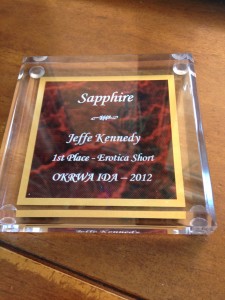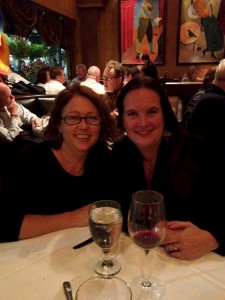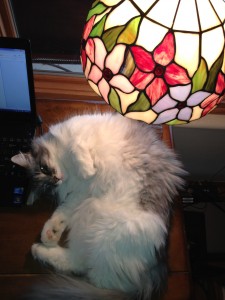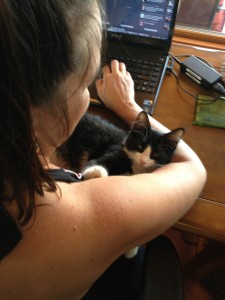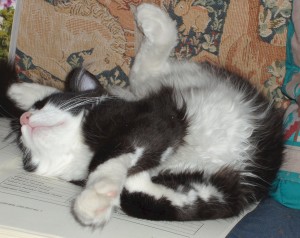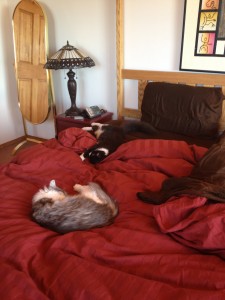 So, the big news is, I officially finished the draft of RP2, now officially dubbed “Rogue’s Possession.”
So, the big news is, I officially finished the draft of RP2, now officially dubbed “Rogue’s Possession.”
Exciting, yes – but the above pic truly encapsulates how we celebrate around here. Ahhh….
It’s so interesting to me how creativity works. We often talk about it like it’s a well, where the water flows at a certain rate, can be drawn down, needs time to replenish, and – horror of horrors – could maybe run dry. But I wonder if this is really an accurate metaphor? After all, creativity is a kind of energy, but it’s not subject to the physical laws of the universe. It almost belongs to the spiritual realm. My physical body might tire – the brain that translates the story, the hands that type it – but it seems to me the creativity itself should be endless.
Yet, it never feels that way.
Here it is, October 26, and I haven’t put up my Halloween decorations. I *love* Halloween. I have two great big bins of decorations sitting in the garage. I’d thought maybe I’d put them up last weekend, but I spent my time writing 10,000 words on Rogue’s Possession.
I know that’s not my usual thing, but I was experimenting. David was out of town for the weekend and I really wanted to finish Possession so I can get started on Ruby (book 3 in Facets of Passion) which is due to fabulous editor Deb at the end of November. So, I tried writing five 60-minute blocks each day. In between, I walked the dog, cooked meals, did dishes, that sort of thing.
Did not put up decorations.
It just felt like too much. Though it would have taken very little time, really.
And I did it! I wrote a little over 5K each day, did not feel exhausted and it let me finish the book early. The ending can be like that for me – I just have to keep going with it, because if I stop, I can lose the threads. Somehow, though, that extra bit of tangential creativity, putting up some decorations, seemed absolutely impossible.
I’ve done this at other times in my life, when things going on just absorbed so much of my personal energy that other stuff just had to be dropped, totally and completely. Shut the door and sever the cord. I used to quilt and loved it, but finally faced that I had to stop and divert that energy into writing. That choice made a huge difference in my writing productivity.
Now that the book is finished, I feel that energy bubbling within. Which is great news for Ruby!
Maybe I’ll get those decorations up this weekend…
Also, if you’re online this weekend, I’ll be participating in Coyote Con – an online free writing conference. I’ll be on a panel for Fantasy Romance, 6-7pm Eastern Time tonight. Tomorrow, 2:30-3:30pm ET, I’ll be on a panel with some fab friends “THE GOOD, THE BAD, THE GIRLY & THE MANLY” and another panel tomorrow night (Saturday 10/27), 9:30-10:30pm ET, on erotica and erotic romance.
Next weekend, I’ll be in Toronto for World Fantasy Con – provided Frankenstorm doesn’t raze the city. And, while I’m in Toronto, I’ll be signing cover flats at the Ellora’s Cave booth at the Everything to Do with Sex Show on Saturday evening, November 3, 7-9 pm.
 I’ve been sitting on this news for a couple of weeks, so I’m SUPER EXCITED to finally get it off my chest!
I’ve been sitting on this news for a couple of weeks, so I’m SUPER EXCITED to finally get it off my chest!

